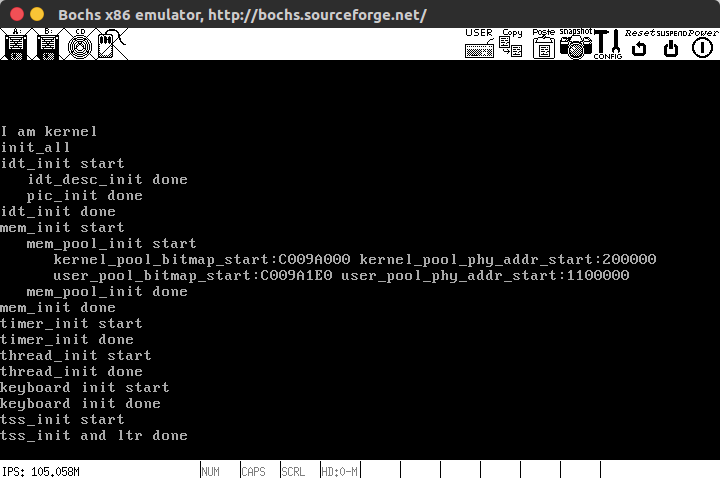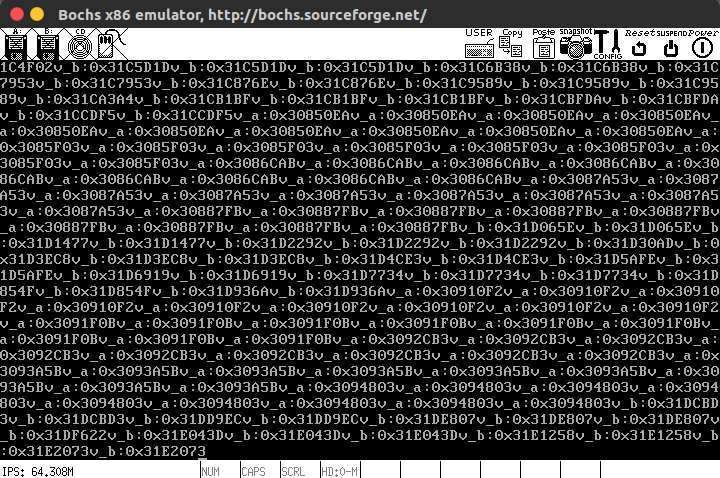1
2
3
4
5
6
7
8
9
10
11
12
13
14
15
16
17
18
19
20
21
22
23
24
25
26
27
28
29
30
31
32
33
34
35
36
37
38
39
40
41
42
43
44
45
46
47
48
49
50
51
52
53
54
55
56
57
58
59
60
61
62
63
64
65
66
67
68
69
70
71
72
73
74
75
76
77
78
79
80
81
82
83
84
85
86
87
88
89
90
91
92
93
94
95
96
97
98
99
100
101
102
103
104
105
106
107
108
109
110
111
112
113
114
115
116
117
118
119
120
121
122
123
124
125
126
127
128
129
130
131
132
133
134
135
136
137
138
139
140
141
142
143
144
145
146
147
148
149
150
151
152
153
154
155
156
157
158
159
160
161
162
163
164
165
166
167
168
169
170
171
172
173
174
175
176
177
178
179
180
181
182
183
184
185
186
187
188
189
190
191
192
193
194
| #include "thread.h"
#include "stdint.h"
#include "string.h"
#include "global.h"
#include "memory.h"
#include "debug.h"
#include "interrupt.h"
#include "print.h"
#include "../userprog/process.h"
#define PG_SIZE 4096
struct task_struct* main_thread;
struct list thread_ready_list;
struct list thread_all_list;
static struct list_elem* thread_tag;
struct task_struct* running_thread()
{
uint32_t esp;
asm ("mov %%esp, %0" : "=g" (esp));
return (struct task_struct*)(esp & 0xfffff000);
}
static void kernel_thread(thread_func* function, void* func_arg)
{
intr_enable();
function(func_arg);
}
void thread_create(struct task_struct* pthread, thread_func function, void* func_arg)
{
pthread->self_kstack -= sizeof(struct intr_stack);
pthread->self_kstack -= sizeof(struct thread_stack);
struct thread_stack* kthread_stack = (struct thread_stack*)pthread->self_kstack;
kthread_stack->eip = kernel_thread;
kthread_stack->function = function;
kthread_stack->func_arg = func_arg;
kthread_stack->ebp = kthread_stack->ebx = kthread_stack->esi = kthread_stack->edi = 0;
}
void init_thread(struct task_struct* pthread, char* name, int prio)
{
memset(pthread, 0, sizeof(*pthread));
strcpy(pthread->name, name);
if (pthread == main_thread)
{
pthread->status = TASK_RUNNING;
}
else
{
pthread->status = TASK_READY;
}
pthread->self_kstack = (uint32_t*)((uint32_t)pthread + PG_SIZE);
pthread->priority = prio;
pthread->ticks = prio;
pthread->elapsed_ticks = 0;
pthread->pgdir = NULL;
pthread->stack_magic = 0x19870916;
}
struct task_struct* thread_start(char* name, int prio, thread_func function, void* func_arg)
{
struct task_struct* thread = get_kernel_pages(1);
init_thread(thread, name, prio);
thread_create(thread, function, func_arg);
ASSERT(!elem_find(&thread_ready_list, &thread->general_tag));
list_append(&thread_ready_list, &thread->general_tag);
ASSERT(!elem_find(&thread_all_list, &thread->all_list_tag));
list_append(&thread_all_list, &thread->all_list_tag);
return thread;
}
static void make_main_thread(void)
{
main_thread = running_thread();
init_thread(main_thread, "main", 31);
ASSERT(!elem_find(&thread_all_list, &main_thread->all_list_tag));
list_append(&thread_all_list, &main_thread->all_list_tag);
}
void schedule()
{
ASSERT(intr_get_status() == INTR_OFF);
struct task_struct* cur = running_thread();
if (cur->status == TASK_RUNNING)
{
ASSERT(!elem_find(&thread_ready_list, &cur->general_tag));
list_append(&thread_ready_list, &cur->general_tag);
cur->ticks = cur->priority;
cur->status = TASK_READY;
}
else
{
}
ASSERT(!list_empty(&thread_ready_list));
thread_tag = NULL;
thread_tag = list_pop(&thread_ready_list);
struct task_struct* next = elem2entry(struct task_struct, general_tag, thread_tag);
next->status = TASK_RUNNING;
process_activate(next);
switch_to(cur, next);
}
void thread_init(void)
{
put_str("thread_init start\n");
list_init(&thread_ready_list);
list_init(&thread_all_list);
make_main_thread();
put_str("thread_init done\n");
}
void thread_block(enum task_status stat)
{
ASSERT(((stat == TASK_BLOCKED) || (stat == TASK_WAITING) || (stat == TASK_HANGING)));
enum intr_status old_status = intr_disable();
struct task_struct* cur_thread = running_thread();
cur_thread->status = stat;
schedule();
intr_set_status(old_status);
}
void thread_unblock(struct task_struct* pthread)
{
enum intr_status old_status = intr_disable();
ASSERT(((pthread->status == TASK_BLOCKED) || (pthread->status == TASK_WAITING) || (pthread->status == TASK_HANGING)));
if (pthread->status != TASK_READY)
{
ASSERT(!elem_find(&thread_ready_list, &pthread->general_tag));
if (elem_find(&thread_ready_list, &pthread->general_tag))
{
PANIC("thread_unblock: blocked thread in ready_list\n");
}
list_push(&thread_ready_list, &pthread->general_tag);
pthread->status = TASK_READY;
}
intr_set_status(old_status);
}
|

